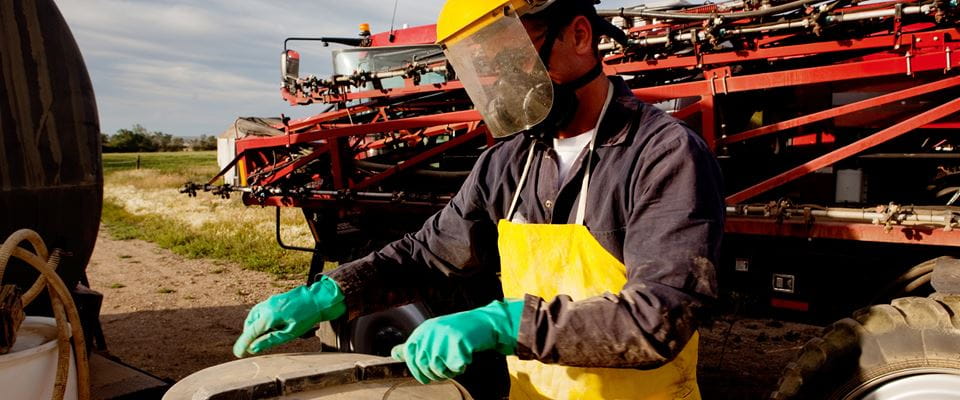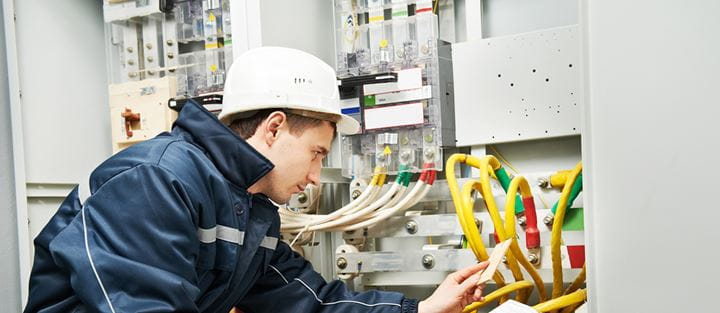Around 340,000 people work in the agricultural sector1; a mix of the self-employed, employees, family, casual and gang labour for seasonal activities. However, working in the farming industry can be extremely hazardous. As well as operating potentially dangerous machinery and vehicles or working with chemicals and livestock, farmers and their staff are exposed to the effects of bad weather, noise and dust.
With high numbers and rates of fatal injury, agriculture is one of the riskiest industry sectors, accounting for about one in five fatal injuries to workers. According to the HSE, that’s around 20 times higher than the average five-year annual rate across all industries.1
Between 1 April 2020 and 31 March 2021, 41 people were killed in agriculture-related activities in the UK, almost double the number of deaths in the previous year.2 Farming is a dangerous profession. It’s essential you have a robust farm health and safety policy and take measures to reduce the risk of injury and illness - this includes having the right farm insurance in place.
Farm equipment safety tips
In 2020, agricultural transport-related incidents, such as overturning vehicles or being struck by moving vehicles, were responsible for more deaths than any other cause.2 Make sure everyone who needs to knows how to use the equipment. Give refresher training where necessary – particularly with harvesting machinery that’s only used several days of the year.
When it comes to operating machinery and vehicles, there are farm safety processes and procedures that you can adopt to prevent the risk of these accidents:
- Check your machinery regularly – make sure it’s mechanically safe; are your brakes and lights on trailers working? They provide important manoeuvring warning signs.
- Reduce your speed – when entering the yard to avoid accidents.
- Replace dust filters – in cabs regularly; wear dust masks to reduce the likelihood of illness and asthma attacks.
- Ensure guards are in place – augers and power take off (PTO) shafts, in particular, can present risks of items being caught or trapped in them, such as clothing.
- Are your drivers competent and the right age? – it’s against the law for children under 13 to use or ride any farm equipment. You may face penalties or prosecution if you fail to abide by this.3
- Service your grain drying system before its first use to ensure there are no faults that could cause injury.
- Take care when turning – you could be wholly or partly blamed if someone overtaking hits you, equally if you turn left and hit an undertaking cyclist.
- Follow the Safe Stop procedure:4
- handbrake on
- controls in neutral
- engine off
- remove your key. - Whilst operating machinery – don’t use any devices that will distract you, such as mobile phones. Also, beware of overhead power cables with tall machinery and bale stacks when manoeuvring to and from your farm.
General safety in farming
Look after yourself and your employees by ensuring you’re doing all you can to minimise risks of accidents and injuries.
Think about what you’re doing. 12,000 workers sustain non-fatal injuries at work each year; 22% relate to slips, trips or falls which may have been prevented.2 Don’t take shortcuts; they can result in disastrous outcomes. Fatal or life-changing injuries can be caused by simply avoiding quick fixes.
When you’re securing bales, use a ladder when climbing them and make sure it’s fixed in place first. Keep bale stacks away from roadsides and buildings to reduce fire risks.
More advice can be found in HSE’s Farmwise: Your essential guide to health and safety in agriculture.5
Harvest time farm safety and staff wellbeing
Harvesting is a busy time. Make sure you and your employees look after themselves by:
- Staying hydrated – make sure there’s plenty of drinking water in cabs.
- Planning your meals – don’t experience ‘sugar lows / highs’, which can reduce concentration and increase the chance of a serious incident.
- Getting plenty of sleep – to prepare for those early starts and late finishes.
- Taking regular breaks – there were an estimated 7,000 work-related cases of musculoskeletal disorders (new or long-standing) annually, about half of all ill health in this sector in 2020. So, if you or your employees are going to be in their cabs for the majority of the day, make time for regular stops to exercise and help prevent joint pain.1
You’re busy every day of the year. From looking after livestock to tending crops, lambing season to harvest time, there’s always a job to be done. Safety is crucial for everyone working on your farm. Create a farm safety culture first and get everyone involved in creating and maintaining a safe working environment.
Sources:
1. https://www.hse.gov.uk/statistics/industry/agriculture.pdf
2. https://press.hse.gov.uk/2021/07/19/figures-show-agriculture-remains-the-worst-performing-industrial-sector/
3. https://www.hse.gov.uk/agriculture/topics/children.htm
4. https://www.hse.gov.uk/agriculture/topics/machinery/safe-use-1.htm#safe-stop
5. https://www.hse.gov.uk/pubns/priced/hsg270.pdf











